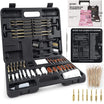As winter approaches, taking cuttings from your favorite plants is a smart way to preserve them for the upcoming spring. By doing so, you ensure that your beloved plants survive through the colder months and thrive once again when the warm weather returns. This method is not only cost-effective but also allows you to maintain the same varieties year after year, even if the parent plant doesn't survive the winter.
In this guide, we'll cover how to take cuttings from a variety of plants, including herbs, perennials, and shrubs, ensuring a successful transition to the next growing season.
Why Take Cuttings Before Winter?
Taking cuttings is a reliable way to propagate plants and is especially useful in regions with harsh winters where outdoor plants may not survive. By propagating your plants indoors, you can create new growth from mature stems and maintain your garden's diversity.
Plant cuttings taken before winter have time to establish roots indoors, making them ready for a head start once spring arrives. Whether you have a lush herb garden, flourishing perennials, or decorative shrubs, cuttings help preserve these varieties effectively.
What You Need to Get Started
Before you begin, gather the following tools and materials:
- Sharp, sterilized pruning shears or scissors
- Small pots or containers with drainage holes
- Seed-starting soil or a mix of peat and perlite
- Rooting hormone powder (optional but beneficial)
- Spray bottle with water
- Clear plastic bags or plastic domes
Step-by-Step Guide to Taking Cuttings
1. Choose Healthy Parent Plants
Start by selecting healthy plants that have shown vigorous growth. Look for disease-free plants, as well as stems that are strong and not overly woody or too young. A cutting taken from a healthy plant is more likely to root successfully.
2. Make the Cut
Use sharp, sterilized shears to take a cutting from a non-flowering stem. Ideally, cut a stem that is 4-6 inches long. Make your cut just below a leaf node, as this is where new roots are most likely to develop. Remove any leaves from the lower half of the cutting, leaving just a few leaves at the top.
3. Apply Rooting Hormone (Optional)
Dip the bottom end of the cutting into a rooting hormone powder. This step isn't mandatory but can speed up the root development process. Tap off any excess powder before planting.
4. Plant the Cuttings
Fill small pots or containers with seed-starting soil or a peat-perlite mix. Use a pencil or your finger to create a hole in the soil, then gently insert the cutting, making sure the node is buried. Press the soil around the cutting to hold it in place.
5. Provide Moisture and Humidity
Mist the cuttings with water and cover the pot with a clear plastic bag or plastic dome to create a humid environment. Place the pots in a warm, bright area, but out of direct sunlight. Check the soil regularly to ensure it remains moist, but not overly wet.
6. Monitor Growth
After a few weeks, you should start to see new growth or roots developing from the base of the cutting. Once the roots are established, remove the plastic covering and allow the cuttings to adjust to normal room humidity.
7. Transplant to Larger Pots
When the cuttings have developed strong roots, transfer them to larger pots with potting soil. Continue to care for them indoors throughout the winter months, and they will be ready for outdoor planting in spring.
Best Plants for Winter Cuttings
While many plants can be propagated by cuttings, certain varieties respond particularly well:
- Herbs: Rosemary, sage, thyme, and mint are popular herbs that root easily from cuttings.
- Perennials: Geraniums, salvias, and lavender are great candidates for pre-winter propagation.
- Shrubs: Hydrangeas, roses, and butterfly bushes can also be propagated successfully with this method.
Tips for Successful Propagation
- Use sterile tools: Clean scissors or pruning shears to prevent disease transfer.
- Monitor humidity: Ensure the environment is humid enough to prevent the cuttings from drying out but not so moist that they develop mold.
- Patience is key: Some plants may take longer to develop roots, so be patient and consistent with your care routine.
Conclusion
Taking cuttings from your favorite plants before winter is a simple yet effective way to extend your garden’s life and prepare for the next growing season. By following the steps outlined above, you can maintain the varieties you love and even expand your garden without the need to purchase new plants each year. So, as the temperatures drop, start planning to propagate your garden favorites and enjoy the benefits of a flourishing garden come spring.























Leave a comment
All comments are moderated before being published.
This site is protected by hCaptcha and the hCaptcha Privacy Policy and Terms of Service apply.